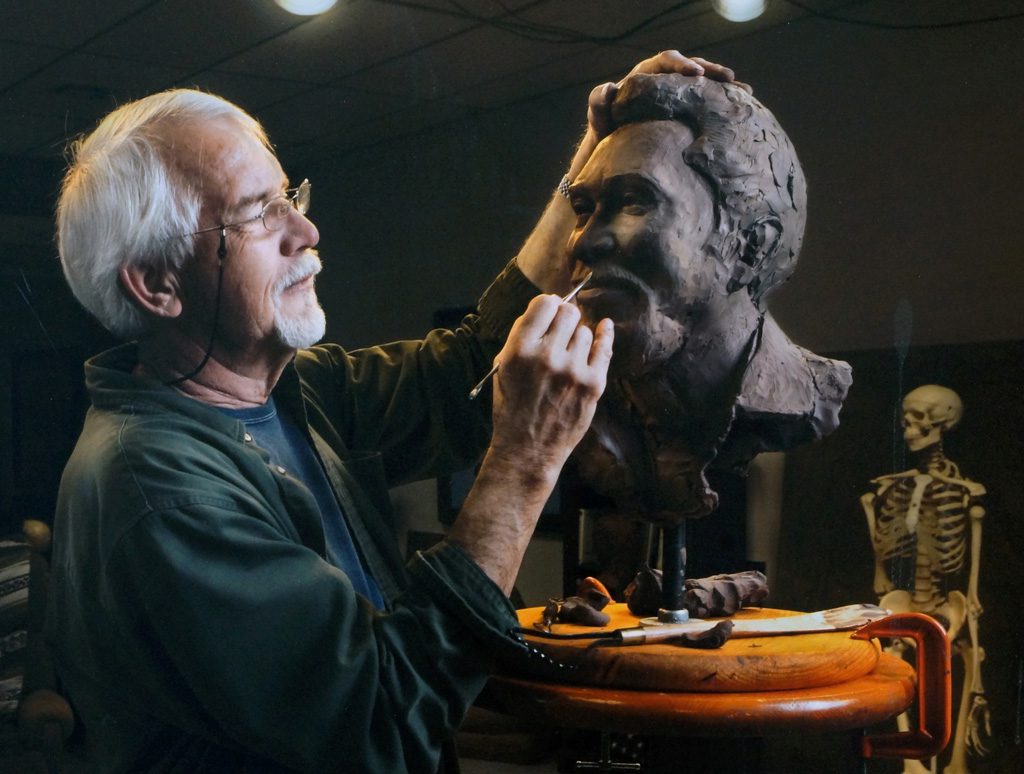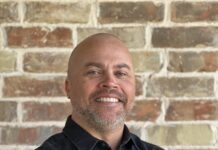Jim Franklin is proof that a hobby or passion can turn into a profitable enterprise. Sometimes, it just takes a while.
A renowned bronze sculptor with a studio on the historic courthouse square in Perry, Franklin worked for Ditch Witch for 20 years in product development, research and sales training before starting his business in 2001. In the two decades before that, Franklin taught himself how to sculpt.
“I’ve been interested in art since high school,” he says. “Just before we moved to Perry in 1980, we lived in Claremore and I met a woman working with wax during Will Rogers Days. That got me interested in sculpting.
“I then talked with a foundry in Oklahoma City and they helped me a lot. I fell in love with the bronze process.”
Franklin works as a commissioned artist whose primary medium is bronze, which metamorphoses during the process.
“The pouring of the bronze itself [into a cast] is most fascinating for me,” he says. “It’s a shimmering orange sherbet. It’s absolutely gorgeous that you can take a solid piece of metal and turn it into a work of art.”

Franklin’s pieces are numerous and widespread; he has 200 bas-relief portraits at the Alabama Sports Hall of Fame. His favorite is of Heisman Trophy winner Billy Sims, which stands outside the University of Oklahoma’s football stadium in Norman.
In his hometown, the wrestling mecca of Oklahoma, Franklin’s bronzes of Jack Van Bebber, an Olympic gold medalist, and Danny Hodge, a three-time national champion and Olympic silver medalist, dominate the Perry Wrestling Monument Park. At the nearby Carnegie Library, Franklin’s bronze of a little girl reading The Adventures of Tom Sawyer, with the title character looking over her shoulder, adorns the lawn.
In addition to sitting on the Perry City Council, Franklin teaches bas-relief classes in his studio and often welcomes experienced sculptors as students.
“It’s not an easy process,” says Franklin, a lifetime member and president of the Oklahoma Sculpture Society. “I teach them how to capture a likeness of people, animals or scenery and shorten it. It’s the shortening of a full-round subject to a representation or projection of a three-dimensional object to a flat surface.
“Teaching them how to fore-shorten an image down to a half-inch is difficult. Say a person’s face is 4 to 5 inches thick. You have to reduce that to a half-inch thick when going from full-round to bas-relief. It’s tough.”
Franklin says sculpting is not just a passion but a form of stress relief.
“I’d had a heart attack about 15 years before I retired from Ditch Witch, so this helped,” he says. “But hobbies can turn into businesses, so now I have the stress of deadlines. But it’s a good type of stress because I’m creating. Designing the art is a biggie for me.”
Franklin encourages anyone to drop by his studio to see what he does.
“I’m interested in answering questions and getting people interested in sculpture. It’s fun to do,” he says. “When I first started in the sculpture business, people shared their knowledge with me, and it’s my responsibility to pass it along.”

























